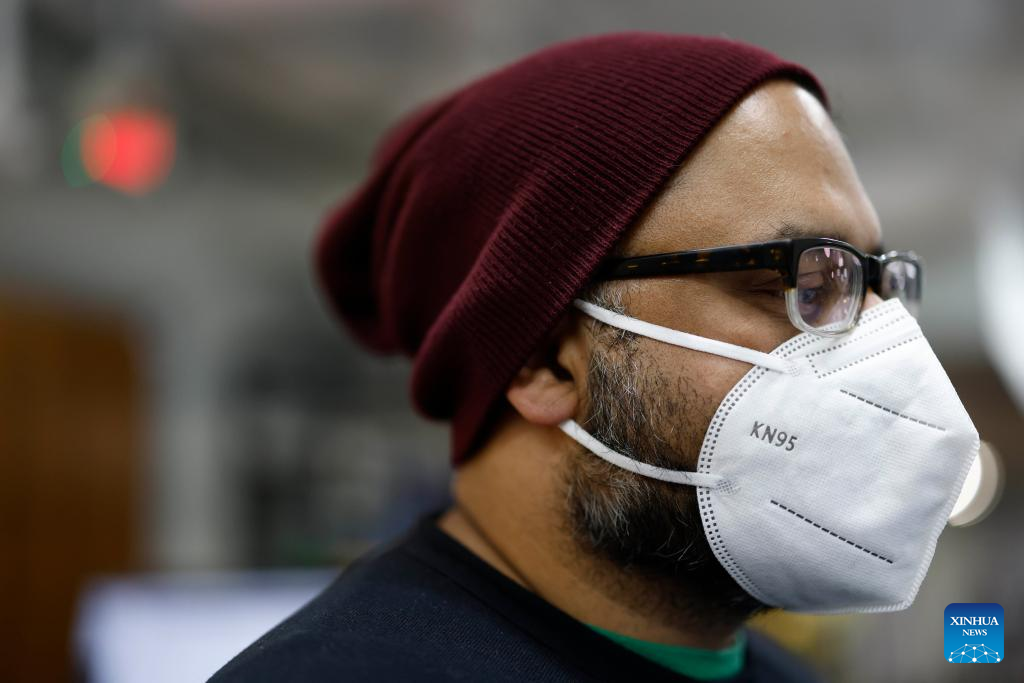
A man wearing a KN95 face mask is seen in Washington, D.C., the United States on Jan. 31, 2022. The highly contagious Omicron variant accounted for 99.9 percent of new weekly COVID-19 infections in the United States, according to data updated by the U.S. Centers of Disease Control and Prevention (CDC) on Tuesday. (Photo by Ting Shen/Xinhua)
WASHINGTON, Feb. 1 (Xinhua) -- The highly contagious Omicron variant accounted for 99.9 percent of new weekly COVID-19 infections in the United States, according to data updated by the U.S. Centers of Disease Control and Prevention (CDC) on Tuesday.
The Delta variant, which spiked last summer, only made up the remaining 0.1 percent in the week ending Jan. 29.
The new infections driven by Omicron have risen rapidly since early December. The variant accounted for only 0.6 percent of new cases in the week ending Dec. 4, rising to 89.3 percent in the week ending Jan. 1, and 97.8 percent in the week ending Jan. 15, CDC data showed.
Several studies have suggested current authorized COVID-19 vaccines could provide strong protection against hospitalization and death caused by the Omicron variant.
During both Delta and Omicron predominance, incidence and hospitalization rates were the highest among unvaccinated persons and the lowest among vaccinated persons with a booster, according to a report published by the CDC on Tuesday. ■
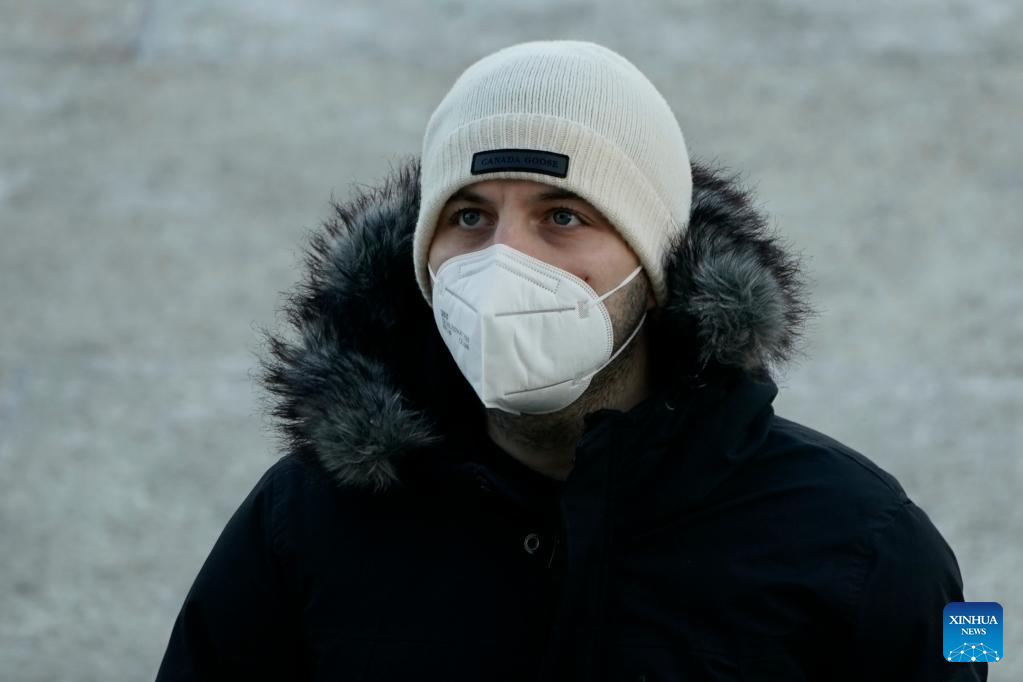
A man wearing a face mask is seen in Washington, D.C., the United States on Jan. 31, 2022. The highly contagious Omicron variant accounted for 99.9 percent of new weekly COVID-19 infections in the United States, according to data updated by the U.S. Centers of Disease Control and Prevention (CDC) on Tuesday. (Photo by Ting Shen/Xinhua)
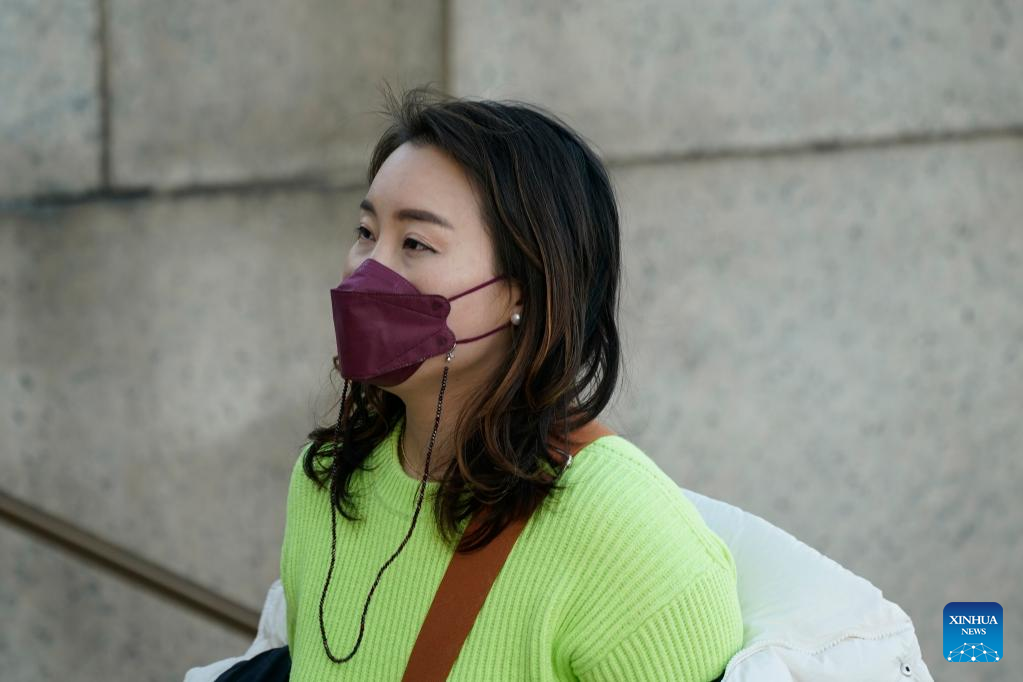
A woman wearing a mask is seen in Washington, D.C., the United States on Jan. 31, 2022. The highly contagious Omicron variant accounted for 99.9 percent of new weekly COVID-19 infections in the United States, according to data updated by the U.S. Centers of Disease Control and Prevention (CDC) on Tuesday. (Photo by Ting Shen/Xinhua)
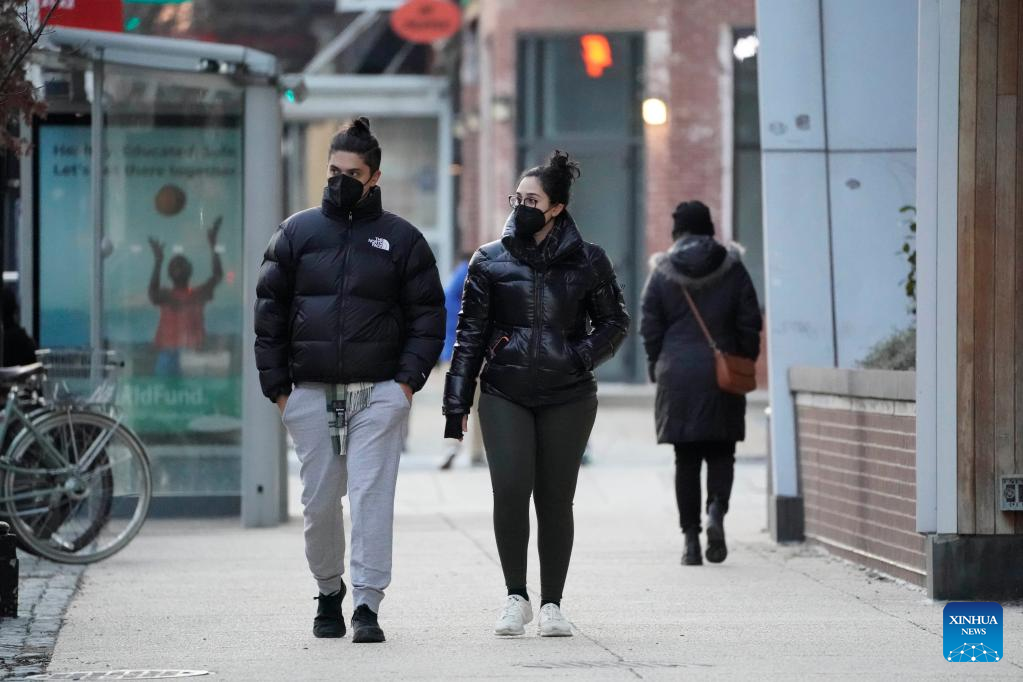
People wearing masks are seen in Washington, D.C., the United States on Jan. 31, 2022. The highly contagious Omicron variant accounted for 99.9 percent of new weekly COVID-19 infections in the United States, according to data updated by the U.S. Centers of Disease Control and Prevention (CDC) on Tuesday. (Photo by Ting Shen/Xinhua)
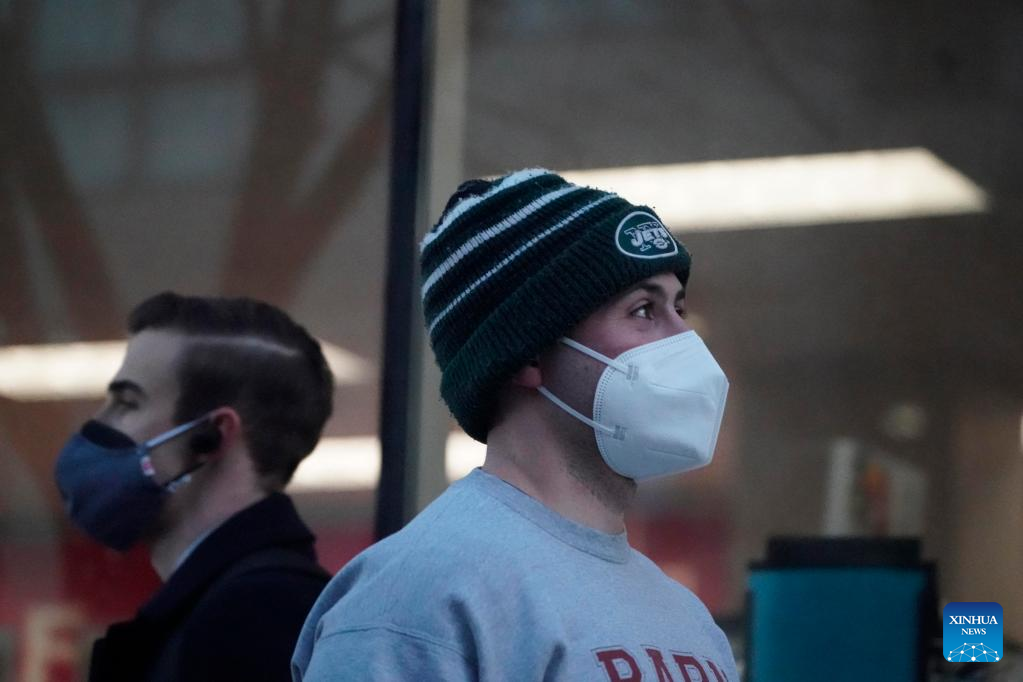
People wearing masks are seen in Washington, D.C., the United States on Jan. 31, 2022. The highly contagious Omicron variant accounted for 99.9 percent of new weekly COVID-19 infections in the United States, according to data updated by the U.S. Centers of Disease Control and Prevention (CDC) on Tuesday. (Photo by Ting Shen/Xinhua)
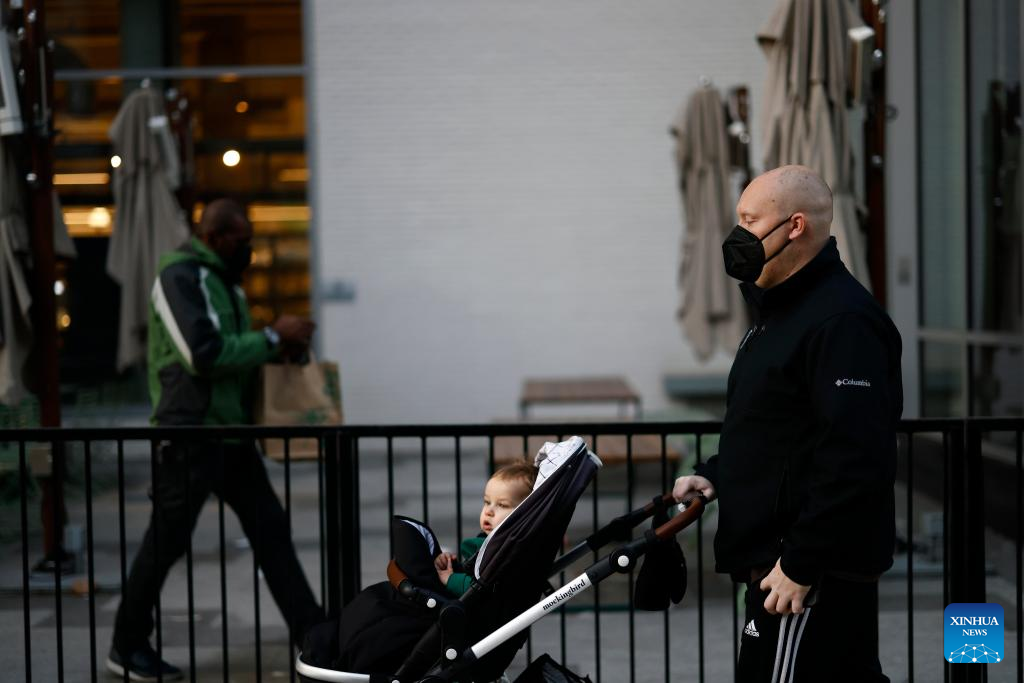
A man wearing a mask is seen in Washington, D.C., the United States on Jan. 31, 2022. The highly contagious Omicron variant accounted for 99.9 percent of new weekly COVID-19 infections in the United States, according to data updated by the U.S. Centers of Disease Control and Prevention (CDC) on Tuesday. (Photo by Ting Shen/Xinhua)
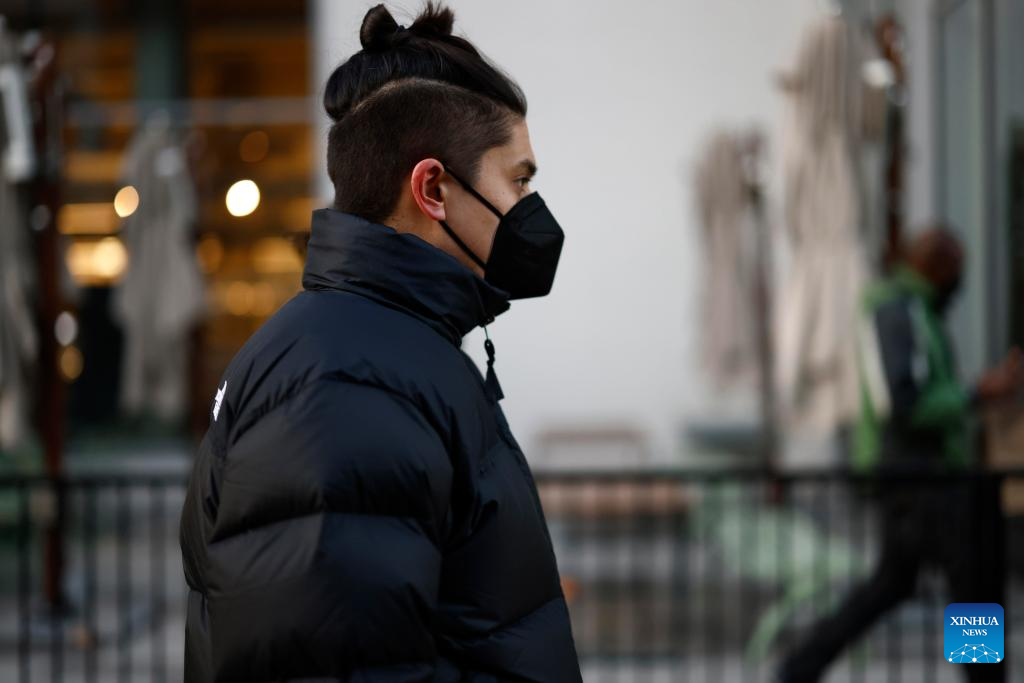
A man wearing a mask is seen in Washington, D.C., the United States on Jan. 31, 2022. The highly contagious Omicron variant accounted for 99.9 percent of new weekly COVID-19 infections in the United States, according to data updated by the U.S. Centers of Disease Control and Prevention (CDC) on Tuesday. (Photo by Ting Shen/Xinhua)



